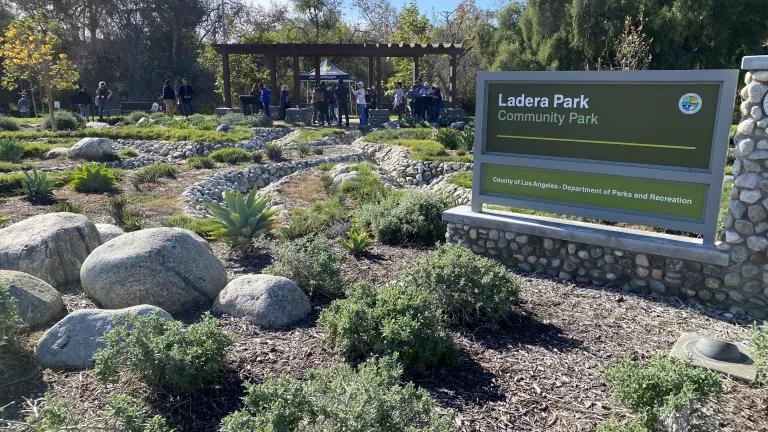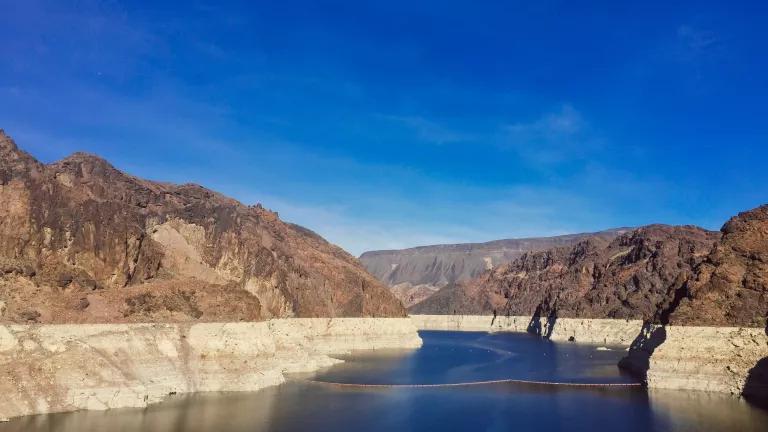It’s been a bad several months for the Trump Administration’s efforts to weaken and eliminate protections for Endangered Species in California’s Bay-Delta watershed. Interior Secretary David Bernhardt is leading this effort in order for the Bureau of Reclamation to deliver more water to his former clients (the Westlands Water District) and other Central Valley Project contractors.
First, in April the State signaled that the Trump Administration’s proposal was not based on sound science and would not comply with State law. Specifically, the Department of Water Resources (DWR) announced that it would seek a separate California Endangered Species Act permit for operations of the State Water Project, instead of relying on permits issued by the U.S. Fish and Wildlife Service and National Marine Fisheries Service under the federal Endangered Species Act (as they’ve done over the past decade). State agencies had repeatedly raised concerns with the Trump Administration’s proposal to increase diversions from the Bay-Delta and eliminate existing protections for salmon and other endangered species, but the Feds wouldn’t listen. So now, as DWR's webpage explains, "To ensure a thorough analysis that considers the best available science, DWR is asking DFW to develop a single permit that does not tier off or rely on the federal process." This State permit is almost certain to require more protective operations for the State Water Project, given the best available science.
Second, in May the U.S. Fish and Wildlife Service released part of their draft biological opinions for independent scientific peer review. I’m sure FWS wasn’t surprised that NRDC identified numerous legal and scientific flaws in their proposal and analysis of its effects (or lack thereof), which we summarized in this letter. But they couldn’t have been pleased by the results of their independent scientific peer reviews, which identified numerous failures to use sound science in the draft and emphasized that the proposal would make things worse for Delta Smelt. For instance, the following statements come from two of the peer reviews (full documents here and here):
- “I believe that the BiOP provides enough information to demonstrate that the status of delta smelt critical habitat under the PA will most likely be degraded by cumulative effects under the early long-term.”
- “if the conclusion of this BiOP is that the PA will make things worse for delta smelt and that the numbers are continuing to decrease, coupled with a conservation hatchery expected to go on line at the date delta smelt are expected to blink out of the environment, doesn’t that suggest great peril for the species?”
- “In short, the BiOP demonstrates that the PA generally will reduce delta outflow with relatively little evidence from Reclamation that this will not negatively alter delta smelt from its present trajectory.”
- “Two main points I take away from reading this: (1) delta smelt numbers are so low, it is difficult to track habitat use and life stages. Therefore, why aren’t they listed? (2) Even though numbers are too low to track, PA suggests increased water deliveries at all times.”
- “The USFWS understands that current information demonstrates “the increasingly imperiled state of Delta Smelt and its designated critical habitat”. Furthermore, “emerging science shows the importance of outflows to all life stages of Delta Smelt and to maintaining the primary constituent elements of designated critical habitat”. Nonetheless, the Proposed Actions seem to be attempts to shift responsibility for adverse effects on Delta Smelt away from water operations and place the focus on “nonoperational factors”.”
- “The treatment of any real cumulative effects on Delta Smelt seems to be effectively ignored, or at least obfuscated, in the BiOp by virtue of the definition of Environmental Baseline…”
- “While this may maximize exports, it increases the risk of jeopardy to Delta Smelt, particularly in areas where the populations are most abundant.”
- “This shows that conditions will be less favorable more often in the primary center of the Delta Smelt population. It is difficult to imagine how these predicted conditions could be considered an acceptable risk to the critical habitat of a listed species.”
- “Proposed actions would drive X2 farther upriver in the fall, degrading critical habitat at the core of remaining Delta Smelt population.”
- “Furthermore, as in other sections of the BiOp, there seems to be a selective use of the findings in cited literature.”
- “Are the methods utilized appropriate to determine if the proposed action is likely to jeopardize delta smelt or adversely modify its critical habitat? The short answer is no.”
Third, in early June the National Marine Fisheries Service released its draft biological opinions for independent scientific peer review. Even though both federal agencies were repeatedly told that the 135 day deadline for completing these biological opinions could not be extended under any conditions, suddenly the peer review – which also meant releasing the draft biological opinions to stakeholders including NRDC – was delayed for 2 weeks. The portions of the draft biological opinions we’ve seen identified significant concerns for endangered salmon, and NRDC has likewise identified major scientific and legal flaws in this letter. We’ll find out soon what the independent scientists think, but the National Marine Fisheries Service has already raised red flags.
None of this should come as a surprise. In 2016 Interior Secretary Sally Jewell concluded that the next biological opinions would need to be more protective of endangered species and would likely reduce diversions from the Bay-Delta, reducing water supply for water contractors South of the Delta. And like the Feds before them, the State has repeatedly recognized that protecting the Bay-Delta and preventing extinction of salmon and other native fish will require significant increases in flow through the Delta and reduced diversions. In 2017, according to this document that NRDC obtained from the California Department of Fish and Wildlife pursuant to the Public Records Act, the State identified specific Delta outflow criteria to protect fish and wildlife in the Bay-Delta, and concluded that meeting those criteria would require reducing diversions by nearly 2 million acre feet per year. The State has been pushing for voluntary agreements among water users to increase Delta outflow and reduce diversions, although the current voluntary proposal is woefully inadequate and achieves only a tiny fraction of the flows that the State previously indicated were necessary.
To be fair, scientists at the U.S. Fish and Wildlife Service and National Marine Fisheries Service were given a biological assessment with virtually no biological modeling, a proposed project that no credible scientist would agree was good for fish and wildlife, an unreasonable 135 day deadline (now 149 days) to produce these complex biological opinions, and a lot of political pressure to greenlight the proposal. Indeed, one of the peer reviewers noted, “The October 19, 2018 Presidential Memorandum on promoting the reliable supply and delivery of water in the West… seems to suggest the existence of federal political pressure favoring water operations over the preservation of endangered species. Within this context, it appears that USFWS historically has been very accommodating to requests from Reclamation to relax restrictions on water operations intended to avoid negative effects on Delta Smelt.” Given those conditions, it’s not surprising that the peer reviews were scathing.
The Trump Administration will undoubtedly continue to pressure the federal agencies to conclude that up is down, black is white, climate change is a Chinese hoax, fish don’t need water, and these proposals are just fine.
But science doesn’t work that way. Mr. Bernhardt and his minions are going to have a heck of an administrative record showing that no matter how much lipstick they put on it, this proposal is just a gluttonous pig.



